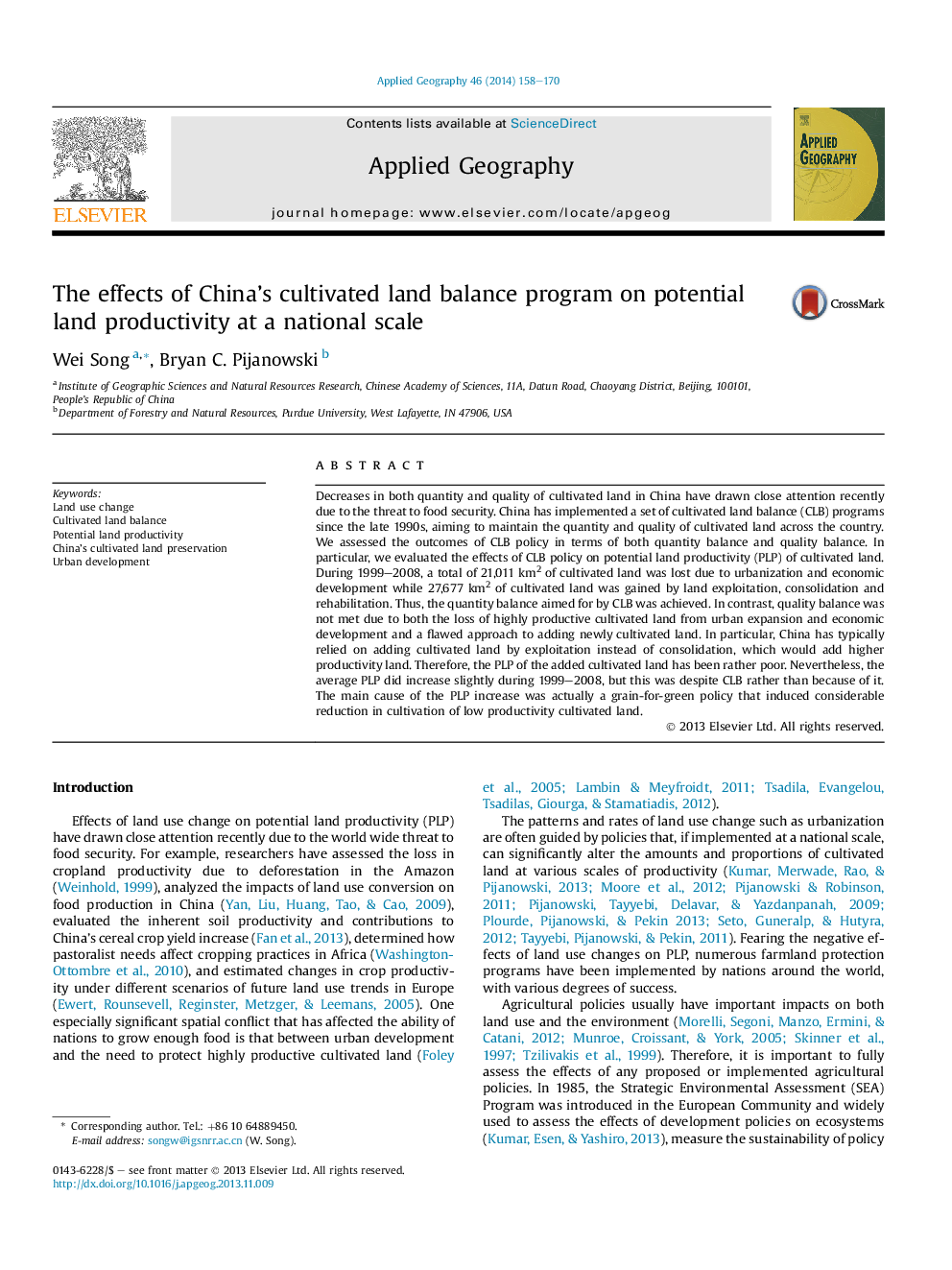| Article ID | Journal | Published Year | Pages | File Type |
|---|---|---|---|---|
| 83487 | Applied Geography | 2014 | 13 Pages |
•We assessed the effectiveness of China's cultivated land balance policy.•We examined changes in potential land productivity in China.•Quantity balance of cultivated land in China was achieved.•Quality balance of cultivated land in China was not attained.•The average potential land productivity in China slightly improved.
Decreases in both quantity and quality of cultivated land in China have drawn close attention recently due to the threat to food security. China has implemented a set of cultivated land balance (CLB) programs since the late 1990s, aiming to maintain the quantity and quality of cultivated land across the country. We assessed the outcomes of CLB policy in terms of both quantity balance and quality balance. In particular, we evaluated the effects of CLB policy on potential land productivity (PLP) of cultivated land. During 1999–2008, a total of 21,011 km2 of cultivated land was lost due to urbanization and economic development while 27,677 km2 of cultivated land was gained by land exploitation, consolidation and rehabilitation. Thus, the quantity balance aimed for by CLB was achieved. In contrast, quality balance was not met due to both the loss of highly productive cultivated land from urban expansion and economic development and a flawed approach to adding newly cultivated land. In particular, China has typically relied on adding cultivated land by exploitation instead of consolidation, which would add higher productivity land. Therefore, the PLP of the added cultivated land has been rather poor. Nevertheless, the average PLP did increase slightly during 1999–2008, but this was despite CLB rather than because of it. The main cause of the PLP increase was actually a grain-for-green policy that induced considerable reduction in cultivation of low productivity cultivated land.
